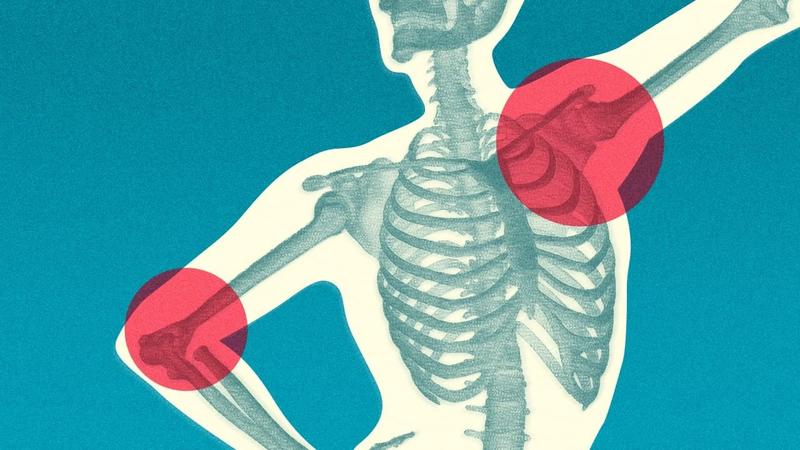Treatments for Pain can be Addictive – But This Research Could Change That
Treatments for Pain can be Addictive – But This Research Could Change That
Kavli Oxford Professor Simon Newstead, David Phillips Chair of Molecular Biophysics at the Department of Biochemistry, was this month's guest expert on the Wellcome Trust's Behind the Research series. Here’s what Simon reports regarding treatments for pain.

Pain is the largest contributor to diminished life experience on the planet. It can limit a person physically, cause emotional distress and lead to social isolation.
One of the key issues with modern healthcare systems is that current drug therapies are still relatively ineffective. They are also associated with problematic side effects, such as the addictive potential of opioids.
After an operation, many people are treated for pain with opioid-based drugs, and a proportion cannot then wean themselves off it. Overusing opioids can lead to other health problems, such as breathing difficulties, and an overdose can cause death.
That’s why the hunt is on for non-opioid-based treatments for pain – and our research could potentially help find a solution.
We want to understand how drug molecules get into the body
It’s been known for several decades now that there are proteins called ‘transporters’ that move drug molecules across the cell membranes in our bodies. My research focuses on understanding how these transporters recognise the molecules they’re supposed to transport, how they transport drug molecules and how they function in different organs, such as the brain, intestines, liver and kidneys.
We’re studying the transporters used by all the major drug classes, including anti-cancer drugs, antivirals and antibiotics, and our findings have very real-life applications. For example, our research could lead to the development of an anti-cancer drug that’s transported into the body in a way that minimises side effects and improves effectiveness.
The biggest challenge we face is understanding how these transporters work in our bodies' complex environment. Achieving this goal will enable the translation of our findings into clinical practice, inform drug development and, ultimately, develop new disease treatments.
Our latest project focuses on the development of a non-addictive, effective pain medication
Our research on chronic pain started a couple of years ago when Professor David Bennett from the Nuffield Department of Clinical Neuroscience reached out to me. His team carried out a questionnaire using the UK Biobank, a large biomedical database, investigating the underlying genetics predisposing people to chronic pain.
They had identified a mutation in a transporter that they knew was associated with chronic pain, but they didn’t know its function.
We ran tests to understand its structure and found connections with a molecule called spermidine, which research has shown can influence neuronal excitability. In collaboration with David’s team, we also discovered that the transporter could be found in a region of the nervous system called the dorsal root ganglion (DRG). DRG neurons emanate from the base of your spine and convey sensory inputs like touch, pain or temperature.
With these findings, David’s team then ran a mouse behavioural study where they were able to link the transporter to regulating pain. In particular, we found that removing the transporter caused less activity in nociceptors, which are specialised DRG neurons that respond to tissue injury and trigger pain sensations.
Together, our teams, along with colleagues in the USA, UK, Norway, Sweden and at AstraZeneca, were able to connect pain to a molecular mechanism. That means there’s a potential opportunity to create a drug that treats it. Such an approach may not be as effective as opioids, but if it can treat chronic pain, it could provide a way of helping people off opioids.
Long-term funding is crucial to taking risks and making discoveries
Our work wouldn’t have been possible without the fundamental research to connect people’s behaviour and experience to molecular mechanisms and cell function. When we started this research project, we didn’t know we would target chronic pain, but we could move resources quickly to tackle it when the opportunity presented itself as part of our ongoing research.
This freedom to operate is what attracted me to the Wellcome Discovery Awards. It allows you to work on broad research questions, connecting different areas of biology and medicine.
I think the longevity of funding is fundamental to supporting bold research. Long-term funding gives you and your team the confidence to take risks, and this is often when the most important discoveries are made.
We are now pursuing novel routes to modulating the ‘pain transporter’ and exploring the potential for developing new medications to treat pain with reduced side effects.
Since April 2021, Oxford University's KAVLI Institute for Nanoscience Discovery is proudly serving as a hub for research groups from seven different departments spanning both the medical and physical sciences, including Professor Simon Newstead's group from the Department of Biochemistry.


